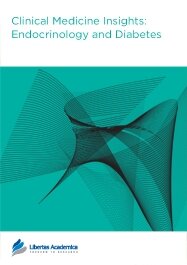

Publication Date: 01 Mar 2008
Journal: Clinical Medicine Insights: Endocrinology and Diabetes
Citation: Clinical Medicine: Endocrinology and Diabetes 2008:1 1-6

1Center for Diabetes and Endocrinology, The Tazuke Kofukai Foundation Medical Research Institute Kitano Hospital, Osaka, Japan. 2Department of Diabetes and Clinical Nutrition, Graduate School of Medicine, Kyoto University, Kyoto, Japan. 3Department of Molecular Medicine and Metabolism, Medical Research Institute, Tokyo Medical and Dental University, Tokyo, Japan. 4Center of Excellence Program for Frontier Research on Molecular Destruction and Reconstitution of Tooth and Bone, Medical Research Institute, Tokyo Medical and Dental University, Tokyo, Japan. 5Department of Food and Nutrition, Kyoto Women’s University, Kyoto, Japan. 6Keihanna Hospital, Hirakata, Japan.
AbstractEpidemiological evidence has established a link among hyperlipidemia, visceral obesity, osteoporosis, and cardiovascular diseases. We have recently proposed a hypothesis that the associations of those disorders are based on interactions of the three organs, i.e. the bone, adipose, and vascular tissues, possibly through multiple actions of several humoral factors and/or transcription factors. We call this unified hypothesis ‘osteo-lipo-vascular interactions’, which may be explained by the common origin of the cells in each organ, such as mesenchymal stem cells or macrophages. Several groups proposed similar hypotheses. On the other hand, there have been accumulating evidences which indicate that there exist hitherto unknown various interactions between many organs, such as hypothalamus-liver, fat-liver, liver-muscle, intestine-pancreas, kidney-heart and so on. Therefore, it seems insufficient to consider only the interactions among several organs, and the standpoint of considering interactions among all organs may be warranted, especially in order to understand the pathogenesis of metabolic syndrome, insulin resistance and type 2 diabetes. We here propose a hypothesis that the abnormal interactions of all organs (“Ominous Orchestra of Organs”) underlies the pathogenesis of type 2 diabetes. It is to be elucidated which of the “players” or the “conductor” may be mainly responsible for disharmony of the orchestra.
PDF (333.14 KB PDF FORMAT)
RIS citation (ENDNOTE, REFERENCE MANAGER, PROCITE, REFWORKS)
BibTex citation (BIBDESK, LATEX)

I would like to congratulate Clinical Medicine Insights: Endocrinology and Diabetes for the professional way it manages the entire publication process. I am certain it will have a bright future, and reach top positions among endocrine and metabolic journals.

All authors are surveyed after their articles are published. Authors are asked to rate their experience in a variety of areas, and their responses help us to monitor our performance. Presented here are their responses in some key areas. No 'poor' or 'very poor' responses were received; these are represented in the 'other' category.See Our Results
Copyright © 2014 Libertas Academica Ltd (except open access articles and accompanying metadata and supplementary files.)
Facebook Google+ Twitter
Pinterest Tumblr YouTube